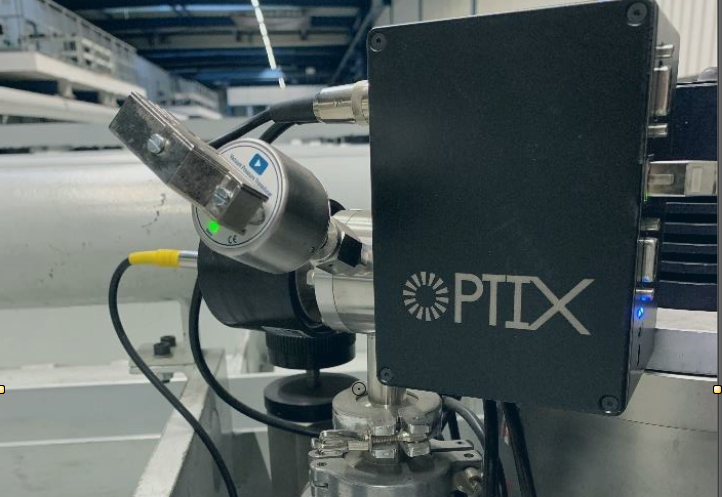How to make life easier for a PVD operator: Why and how to monitor gas in vacuum
- Thomas Vartiainen
- Apr 21, 2023
- 3 min read
Updated: Oct 2, 2024
Monitoring gas in a vacuum chamber is important for several reasons:
Identifying problems early before they affect the process and substrates.
Predicting if a problem is likely to occur.
Scheduling maintenance just in time.
Analyzing the vacuum environment for process development.
Scientifically speaking:
Reaching an optimized base vacuum pressure: that limits the undesirable influence of nitrogen and oxygen on the properties of the desired coating, and that is reached in a short time.
Detecting target poisoning by identifying an abrupt increase in the partial pressure of the reactive gas.
To know if there is a leak in the chamber by monitoring the evolution of the partial pressures of gases after a set time period.
Methods of monitoring
At the same time measuring has to be easy and the measuring device reliable and working when needed (THE major problem with traditional methods, as we will see). Usable common devices and methods are:
Pressure gauges
QMS RGA (residual gas analyzer)
Plasma emission monitoring (PEM)
Remote-Plasma emission monitoring
So what’s the best method?
Talking about “best” is not easy as everyone has (at least slightly) different requirements and coating environments. One particular solution is GENCOA’s ‘OPTIX’ - we have conducted many interviews over the last few weeks with active users with the aim of understanding
why these PVD operators decided to monitor gases (gas monitoring not being a standard yet in PVD) and
why they chose the OPTIX in first place and what they think about it now.
We will look into two major applications and experiences in the following sections.

Plasma monitoring at a flat glass line
1 Detecting and measuring water contamination
The wish for easy measurement and control of moisture is one main reason why PVD-users purchased the GENCOA OPTIX vacuum gas sensing device. We interviewed a bunch of them, all with either a Large Area Coater for architectural glass or with a Roll-to-Roll-coater. We wanted to know why they had chosen the OPTIX and how satisfied they are after using it for a while. This is what they answered in unison:
“It is very easy to use and understand.”
“It is extremely robust and maintenance free.”
“It does not break down and is therefore, in contrary to an RGA, available when we need it.”
All use the water contamination reading as a key parameter before starting their process.
Additional advantage: Optix is more sensitive to water vapor than an RGA as it can detect very small quantities at low pressure.
Some of the interviewees had used an RGA to measure water contamination, none of them would consider it again.
2 Trouble shooting
Easy troubleshooting is the second main application and reason why PVD-operators we interviewed use remote-plasma emission monitoring like the OPTIX. Users stated that such a monitoring device makes it very easy and fast to monitor gases and to find and solve the problems many operators face in day to day operation:
They use it to check the vacuum quality and compare to “good” production runs, to see if there is a difference in specific gas concentrations. The automated identification of gases and partial pressure readings make it easy to find and track contamination.
For instance, a higher carbon signal could point to an organic contamination like oil or grease in the chamber.
When Nitrogen or Oxygen are present at low pressures (<E-3 mbar) there is most likely a leak. Maybe in the door, the typical trapped hair or dust particle?
Optix checks humidity fast and precisely. That is important as humidity varies, affecting how much water vapour is in the air and will be adsorbing on chamber walls. Monitoring the water contamination tells you if it’s safe to start your process or if more pumping/heating is required.
Users especially mentioned the included easy-to understand-software. Compared to other solutions it is much easier to see which gases are present without having specialist skills, and to understand, take action and solve the problem they are facing.
Conclusion: What’s the best method of vacuum gas sensing?
We can we make life for a PVD operator much easier with an advanced method of vacuum gas sensing like the OPTIX – that’s the consensus of many interviews with experts and practitioners within the PVD industry.
Most important for such a device is robustness and availability – what use is it to have a high-end super sensitive device if it is broken all the time (Hello RGA!)?! And that’s exactly what all our interviewees who have been using the OPTIX stated: THEIR tool IS robust, no device had shown any failures since purchasing.
They bring:
Costs savings due to minimized number of defective parts
Time savings by more easily finding source of problems in vacuum chamber(s)
Time & cost savings due to reduced downtime (like faster start after maintenance)




Comments